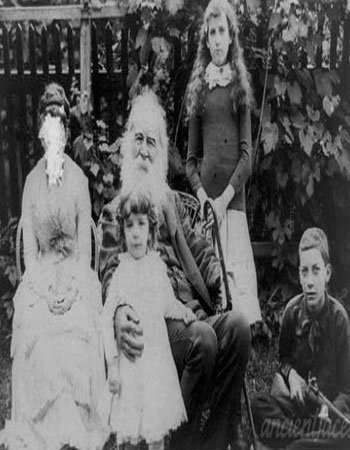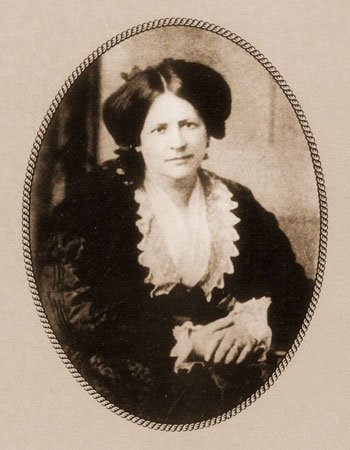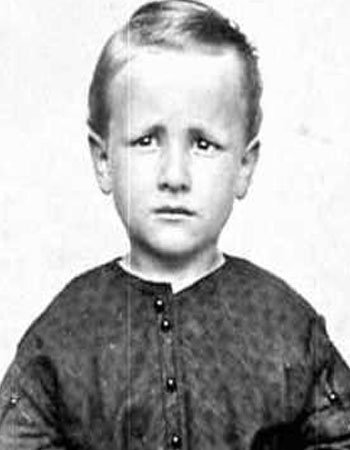Walter Whitman was an American poet, essayist, and journalist, renowned for his contributions to literature. He was born as the second son to Walter Whitman, a house-builder, and Louisa Van Velsor. In his literary endeavors, Whitman skillfully blended elements of transcendentalism and realism, earning him the title of the “father of free verse.”During the 1820s and 1830s, the Whitman family, which included nine children, resided in Long Island and Brooklyn. It was during this period that Whitman attended the public schools in Brooklyn, shaping his early education and intellectual development.
Walt Whitman Biography Age, Career, Family, Education, Poetry, Books, and More
Walt Whitman was born on May 31, 1819, in West Hills, Long Island, New York. He spent much of his childhood and career in Brooklyn. His father, Walter, was a multi-talented individual who worked as a laborer, carpenter, and house builder. At the age of 11, young Walt left formal schooling to enter the workforce. His mother, Louisa, was a devoted Quaker. Walt Whitman’s ancestral roots were diverse, with his father being of English descent and his mother of Dutch heritage. Whitman’s upbringing was influenced by his family’s strong connection to America and its ideals. He would later describe his ancestors as early settlers of Long Island.
Family

Walt Whitman Family Pic

Walt Whitman’s Wife Pic

Walt Whitman Uncle Pic

Walt Whitman Childhood Pic
Background and Early Years
His family relocated to Brooklyn in 1822 when he was just 2 years old. At that time, Brooklyn was still a relatively small town. Within the Whitman family, there were names that bore significant historical and patriotic connotations, including George Washington Whitman, Thomas Jefferson Whitman, and Andrew Jackson Whitman.
Writings
Its literary contributions marked a departure from traditional poetic forms and are often described as prose-like. His writings were characterized by their focus on contemporary trends and their portrayal of urban life. Whitman’s distinctive style deviated from the conventions established by his predecessors, encompassing a unique exploration of themes related to the body, the soul, the self, and the other. In 1842; he penned the temperance novel “Franklin Evans,” a work that vividly depicted the harrowing consequences of alcoholism. While Whitman later disowned this novel as “rot,” it enjoyed commercial success during its time. The novel employed unconventional and evocative imagery, including references to rotting leaves, tufts of straw, and debris. During the mid-1840s, Whitman took on the role of editor at the Brooklyn Daily Eagle. However, his political beliefs, which aligned with the emerging Free Soil Party, eventually led to his dismissal from the newspaper. Whitman was unapologetically candid in his writings, addressing subjects like death and sexuality, even touching on the topic of prostitution.
‘Leaves of Grass’
In the preface to the 1855 edition of “Leaves of Grass,” Walt Whitman introduced his groundbreaking work with a distinct approach. The book itself was quite unconventional; it contained 12 untitled poems that were typeset in a manner more resembling prose than traditional poetry. Whitman, in part, was involved in the typesetting process, emphasizing the unique character of his work. Whitman believed deeply in the interconnectedness between the poet and society, and he expressed this conviction in the preface. In an extensive and remarkable preface, he introduced himself as an “American bard,” underlining the intimate relationship between the poet and the American experience. This theme was particularly pronounced in “Song of Myself,” where Whitman employed a commanding first-person narrative.
Civil War years
As the American Civil War loomed on the horizon, Walt Whitman published his stirring poem “Beat! Beat! Drums!” which served as a patriotic rallying cry for the Union cause. The year was 1861, and the onset of the Civil War was a pivotal moment in American history. During this time, Whitman’s brother, George, enlisted in a New York infantry regiment, and he began sending Walt detailed letters from the front lines.
In December 1862, as the Battle of Fredericksburg raged on and with concern for his wounded brother, Walt Whitman made the arduous journey southward to Virginia in search of George. Along the way, however, his wallet was stolen. The proximity to the war, the soldiers, and especially the wounded had a profound impact on Whitman.
In Washington, D.C., Whitman’s friend Charley Eldridge helped him secure part-time work in the army paymaster’s office, which allowed him the flexibility to volunteer as a nurse in the army hospitals. His interactions with wounded soldiers during this period inspired a collection of Civil War poems, eventually published under the title “Drum-Taps.”
During his time in Washington, Whitman occasionally saw Abraham Lincoln passing by in his carriage, which lifted his spirits. He later obtained a better-paying government position as a low-grade clerk in the Bureau of Indian Affairs within the Department of the Interior, thanks to his friend William Douglas O’Connor. Whitman even wrote an essay about Lincoln’s inauguration, published in The New York Times on March 12, 1865.
Health decline
Walt Whitman faced a significant health setback when he suffered a paralytic stroke in early 1873. Following this medical crisis, he made the decision to relocate from Washington to his brother’s home in Camden, New Jersey. George Washington Whitman, his brother, and an engineer, welcomed him to his residence at 431 Stevens Street in Camden.
Death
Walt Whitman passed away on March 26, 1892, while at his residence in Camden, New Jersey. At the time of his death, he was 72 years old. In a statement he made on paper, he expressed his early life mission as follows: “Early in life, he decided that his mission should be to ‘preach the gospel of democracy and of the natural man,’ and he schooled himself for the work by passing all his available time among men and women and in the open air, absorbing into himself nature, character, art, and indeed all that makes up the eternal universe.”The official cause of his death was documented as “pleurisy of the left side, consumption of the right lung, general miliary tuberculosis, and parenchymatous nephritis.” Whitman’s final resting place is a tomb he designed himself, located in Harleigh Cemetery in Camden, New Jersey. In subsequent years, the remains of Whitman’s parents, two of his brothers, and their families were also interred in the same mausoleum.
Legacy
Walt Whitman’s poetry was nothing short of revolutionary, both in terms of subject matter and literary style. Despite the initial controversies surrounding his work, Whitman is now regarded as one of America’s most pioneering poets. His writing has inspired a wealth of dedicated scholarship and various forms of media, and this influence continues to expand. Over time, despite being seen as eccentric and provocative, he earned the title of “America’s good gray poet.”
Notable books about Whitman and his work include the acclaimed “Walt Whitman’s America: A Cultural Biography” (1995) by David S. Reynolds and “Walt Whitman: The Song of Himself” (1999) by Jerome Loving. Today, Whitman is celebrated as one of the nation’s greatest poets, and selections from his magnum opus, “Leaves of Grass,” are widely included in educational curricula at schools and universities, ensuring that his legacy endures for generations to come.
Works
- Franklin Evans; or The Inebriate: A Tale of the Times (1842)
- The Half-Breed; A Tale of the Western Frontier (1846)
- Life and Adventures of Jack Engle (serialized in 1852)
- Leaves of Grass (1855, the first of seven editions through 1891)
- Manly Health and Training (1858)
- Drum-Taps (1865)
- Democratic Vistas (1871)
- Memoranda During the War (1876)
- Specimen Days (1882)
- The Wound Dresser: Letters written to his mother from the hospitals in Washington during the Civil War, edited by Richard M. Bucke (1898)
- Walt Whitman Speaks: His Final Thoughts on Life, Writing, Spirituality, and the Promise of America as told to Horace Traubel, edited by Brenda Wineapple (2019)
Also Check: Rahul Mody
| Body Measurements | |
| Birth Place | Long Island, New York |
| Children | |
| Eye Color | |
| Hair Color | |
| Height In CM | CM |
| Height In Meter | M |
| Nationality | |
| Parents | Father: Walter Whitman Mother: Louisa |
| Profession | American poet, essayist, and journalist |
| Siblings | |
| Spous | |
| Weight | |
| Zodiac Sign |
Comments
If you have any question, please write below.

Enter your comment!